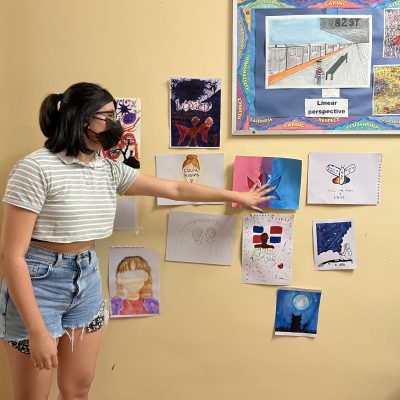Details
Article
Throughout history, artists have wielded their brushes and chisels as weapons against the status quo, challenging politics and societal norms. From the provocative caricatures of Daumier in 19th-century France, echoing the unrest of the masses, to Picasso’s “Guernica,” a harrowing cry against the brutality of war, art has always been a mirror to society’s soul.
In the grand theater of modern society, where the spectacle of politics often overshadows the truth, emerges a subversive player: digital art. In today’s digital age, this legacy continues with a new medium and a new landscape of political conflicts: the internet. However, the question isn’t merely whether digital art affects these realms, but rather, how it revolutionizes them.
Pixels become the soldiers of political expression…
First, let us consider the realm of digital art as a battleground, where pixels become the soldiers of political expression. The Black Lives Matter movement and the Arab Spring are prime examples, akin to a Kafkaesque metamorphosis, where digital images transformed passive observers into active participants. Then there’s Banksy, the enigmatic artist, whose work infiltrates the digital world like a virus, subverting the mainstream narrative. It reminds one of Lacan’s mirror stage – the art reflects not just society, but our perception of it. Similarly, the Yellow Vest movement’s digital proliferation illustrates how the internet has become a Dadaist playground for political expression, challenging traditional power structures.
Digital art emerges as a beacon for the marginalized.
Next, in the labyrinth of cyberspace, digital art emerges as a beacon for the marginalized. Rupi Kaur’s Instagram poetry and Syrian refugees’ narratives are like voices in the wilderness, finally heard. Banksy’s graffiti, echoing across the digital expanse, serves as a visual chorus to these voices. Consider Button Poetry, an online platform where poets, akin to modern-day Socratic figures, challenge societal norms through spoken word. Indigenous and LGBTQ+ digital art forms are like Foucault’s panopticon in reverse – they observe and challenge the society that scrutinizes them.
Digital art reshapes cultural narratives, a task akin to rewriting the script of a play mid-performance. The proliferation of indigenous and LGBTQ+ art online is reminiscent of a Brechtian epic theatre, breaking the fourth wall of cultural narratives. The #MeToo movement, fueled by digital storytelling, created maive ripples in the digital landscape of gender discourse.
Digital art has the potential to reshape reality.
Finally, in the fragmented world we inhabit, digital art serves as a unifying force, a bridge over the chasms of cultural and societal divides. Collaborative initiatives like The Sketchbook Project reflects a virtual public sphere, where art becomes a dialogue transcending borders. During the pandemic, digital art projects offered a semblance of global unity. Platforms like DeviantArt and Behance democratize art – every artist has a voice. This transcendence through art echoes Adorno’s concept of the transformative power of aesthetics – digital art not only reflects reality but also has the potential to reshape it.
Why is all the abovementioned important? In the grand narrative of democracy and diversity, digital art emerges not just as a chapter but as a critical revision. It challenges us to reevaluate our understanding of art’s role in society. Like a Žižekian paradox, it confronts us with the reality of our illusions and the illusions of our reality. In this digital renaissance, we must ponder: Does the evolution of digital art herald a new epoch of democratic engagement and cultural inclusivity? Could this be the dawn of an era where art not only mirrors society but actively molds it? This is the provocative question we must grapple with as we navigate the ever-evolving landscape of digital art and its impact on the political mosaic of our societal and cultural surroundings.





